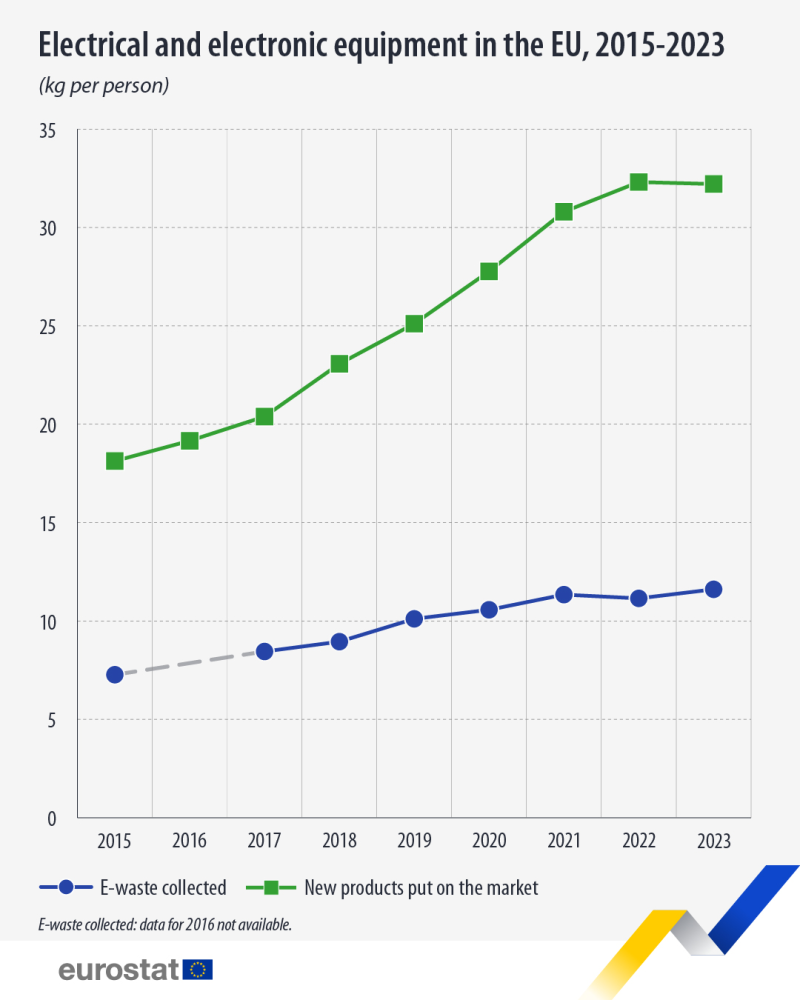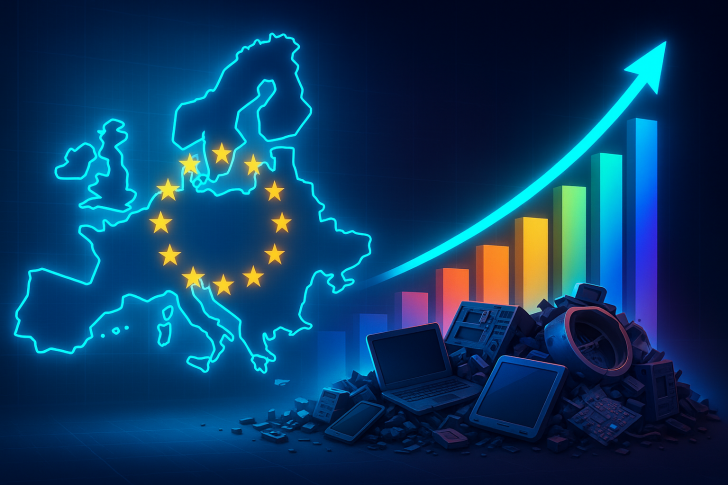● According to recent data from EU_Eurostat, Europeans generated 11.6 kilograms of e-waste per person in 2023. Meanwhile, 32.2 kilograms of new electronics entered the market—a 78% increase since 2015. The numbers reveal a growing divide between what we buy and what we recycle, raising questions about sustainability and waste management across the EU.

● The European Commission is working on revised e-waste rules that could include higher fees for manufacturers and tougher collection targets. The idea is to make producers pay for end-of-life recycling systems. But the electronics industry warns this could hurt smaller companies and push manufacturing jobs out of Europe to countries with lighter regulations. Policymakers are trying to find the sweet spot between green goals and keeping industry competitive.

● New recycling fees could squeeze corporate profits and slow production growth. To avoid losing tax revenue, industry groups have floated an alternative: target the biggest electronics companies by revenue instead of applying blanket environmental charges. They argue this would protect smaller innovators while keeping government budgets intact.
● The gap between 32.2 kg of new products and just 11.6 kg of collected waste per person shows the recycling system isn't keeping up. If this continues, the EU could miss its circular economy targets and lose tax revenue as companies downsize or relocate. The electronics sector employs hundreds of thousands across Europe, making it crucial for both the economy and the environment.
 Marina Lyubimova
Marina Lyubimova

 Marina Lyubimova
Marina Lyubimova


